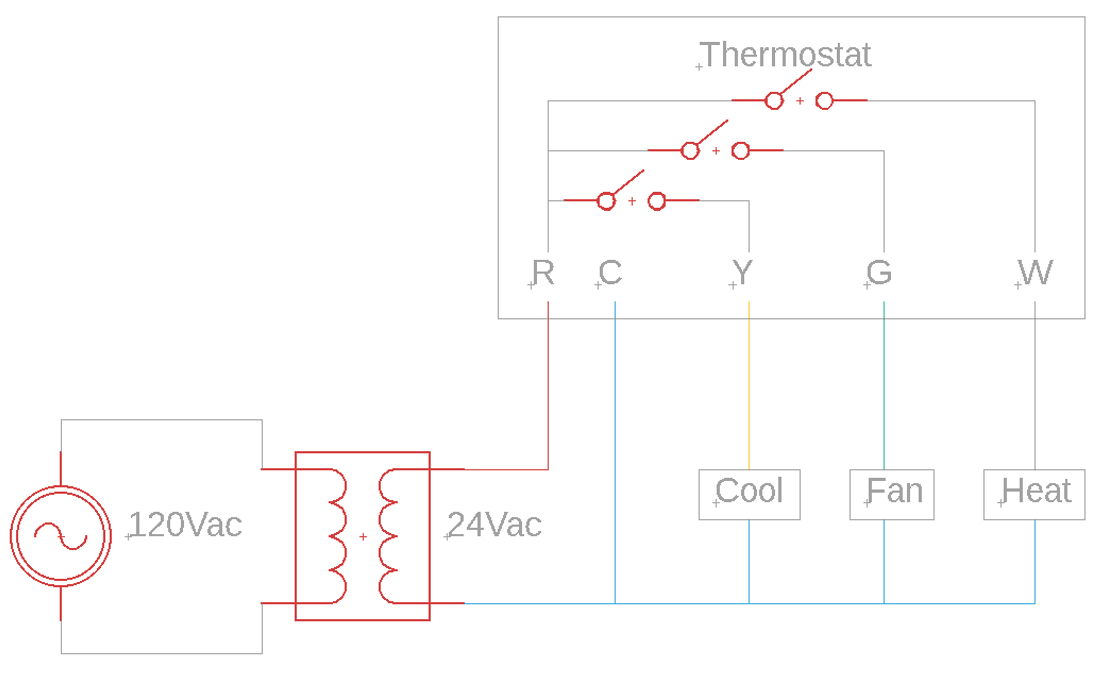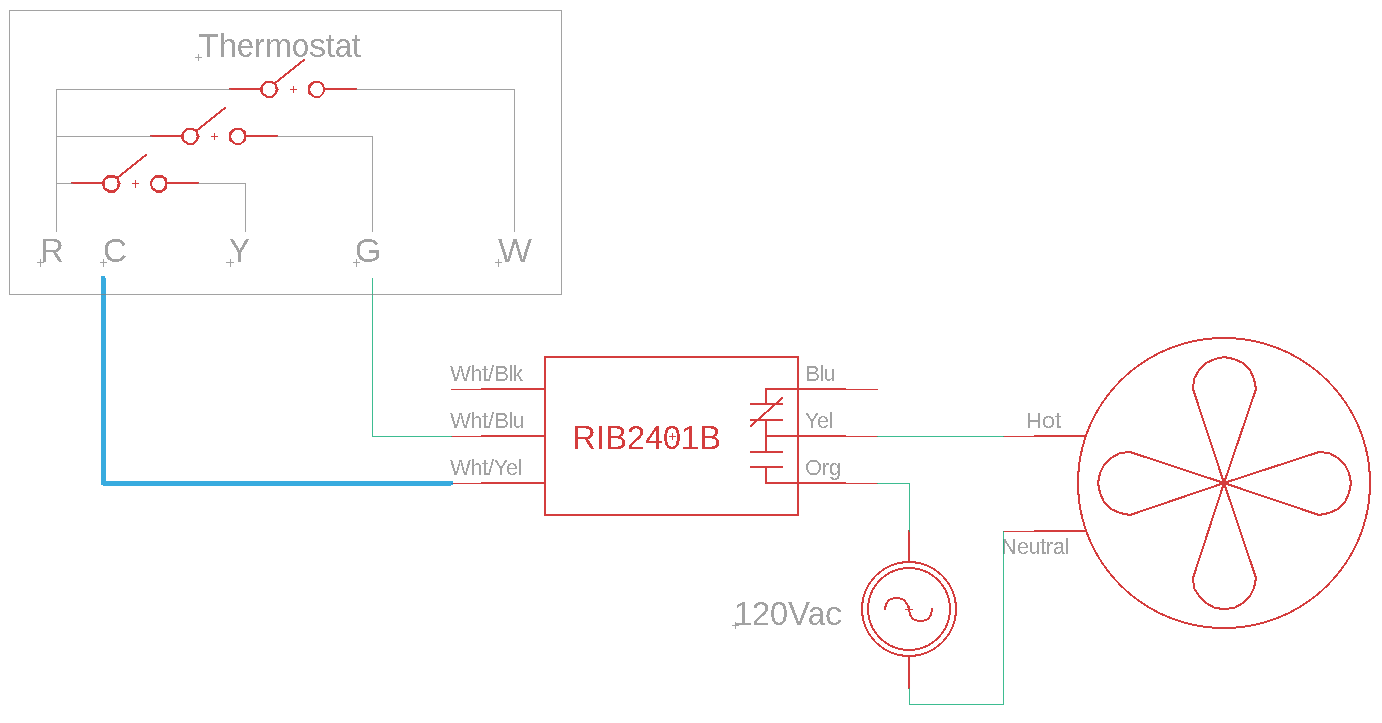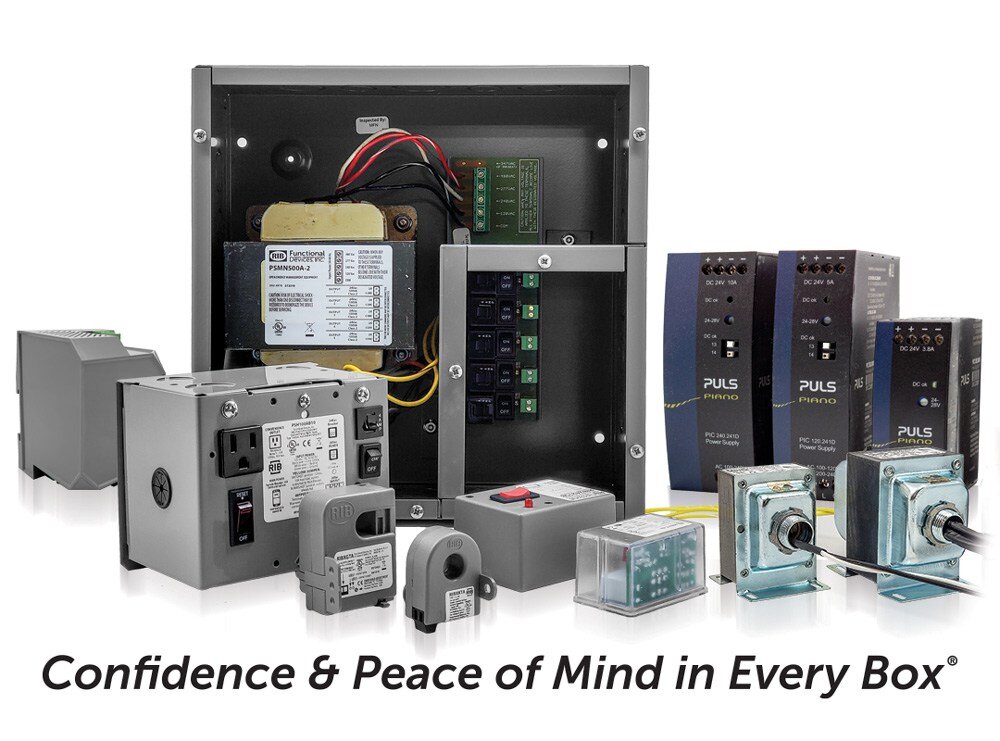Thermostats may seem simple—just a way to control heating and cooling—but there’s a lot more going on behind those colorful wires. Beyond adjusting the temperature, thermostats send low-voltage signals that control everything from fans to HVAC systems. In this guide, we’ll break down common thermostat wire colors, explain how those tiny wires control big equipment, and show how RIB® relays can bridge the gap between low-voltage signals and high-voltage loads.
Answers at a Glance
Q: What do the different thermostat wire colors mean?
A: Each color typically corresponds to a control function—like Red for 24V power, Yellow for cooling, White for heat, Green for fan, and Black or Blue for common.
Q: Can a thermostat control high-voltage equipment directly?
A: No. Thermostats use low-voltage signals (usually 24V) that control relays or boards, not high-voltage loads directly.
Q: How can I use a thermostat to control a high-power device like a fan or motor?
A: By pairing the thermostat’s low-voltage output with a relay like the RIB2401B, you can safely control high-voltage or high-current equipment.
Q: Will using a RIB® relay overload my thermostat?
A: No. Devices like the RIB2401B draw minimal current (e.g., 83mA), making them compatible with standard thermostat outputs.
Q: Can this setup be used for other HVAC equipment?
A: Absolutely! This method works for controlling gas valves, pumps, boilers, and more—anything needing high voltage or current activation.
Thermostat Wire Colors
- Red (R, Rh, Rc) - 24VAC Power
- Yellow (Y) - Cool Signal
- White (W) - Heat Signal
- Green (G) - Fan Signal
- Black or Blue (C) - 24VAC Common
- Orange (O) - Reversing Valve Signal for Cooling
- Dark Blue (B) - Reversing Valve Signal for Heating
- Light Blue/Other (Y2) - Stage 2 Cool Signal
- Brown/Other (W2) - Stage 2 Heat Signal
- No Universal Color (E) - Emergency Heat Signal
- No Universal Color (X/AUX) - Auxiliary Heat Signal

The control transformer provides 24Vac to the Thermostat. Older systems may not have a common wire, but that common wire is necessary for powering smart thermostats. All the other thermostat wires are applying or removing a 24V signal. For example, if the thermostat is reading the room temperature as higher than desired, it will close the circuit between the Red and Yellow wires. The Yellow wire is sent to the air conditioner's control board, where it completes the circuit of a relay. There are dozens of configurations of wires that may or may not be available at the thermostat, but hopefully this overview is enough to get an idea of the role of a thermostat.
Using RIB for High Voltage and High Current
If we have access to the common wire, putting a volt meter from (G) to (C) we read 24V when there's a call for the fan and 0V when there is no call. Let's say we want to use that signal to turn on and off a 1HP @ 120V make-up air unit. We can use an RIB2401B.

From the RIB2401B datasheet, we can see the RIB will only draw 83mA @ 24Vac from the thermostat green wire. Like magic, now we've turned on a 1HP motor! The same concept can be used for turning on gas valves, boilers, pumps, or just about any HVAC equipment that needs high voltage or high current.
RIB® Relays Offer Effective Solutions
With a basic understanding of thermostat wiring and the right relay, you can easily extend a thermostat’s control to high-power HVAC equipment. Whether you’re running a fan, motor, or pump, RIB® relays offer a simple, effective solution. For more magic or details on any of our products, please go to our website or contact us directly.
About Functional Devices, Inc.

Functional Devices, Inc., located in the United States of America, has been designing and manufacturing quality electronic devices since 1969. Our mission is to enhance lives in buildings and beyond. We do so by designing and manufacturing reliable, high-quality products for the building automation industry. Our suite of product offerings include RIB relays, current sensors, power controls, power supplies, transformers, lighting controls, and more.
We test 100% of our products, which leads to less than 1 out of every 16,000 products experiencing a failure in the field.
Simply put, we provide users of our various products confidence and peace of mind in every box.

